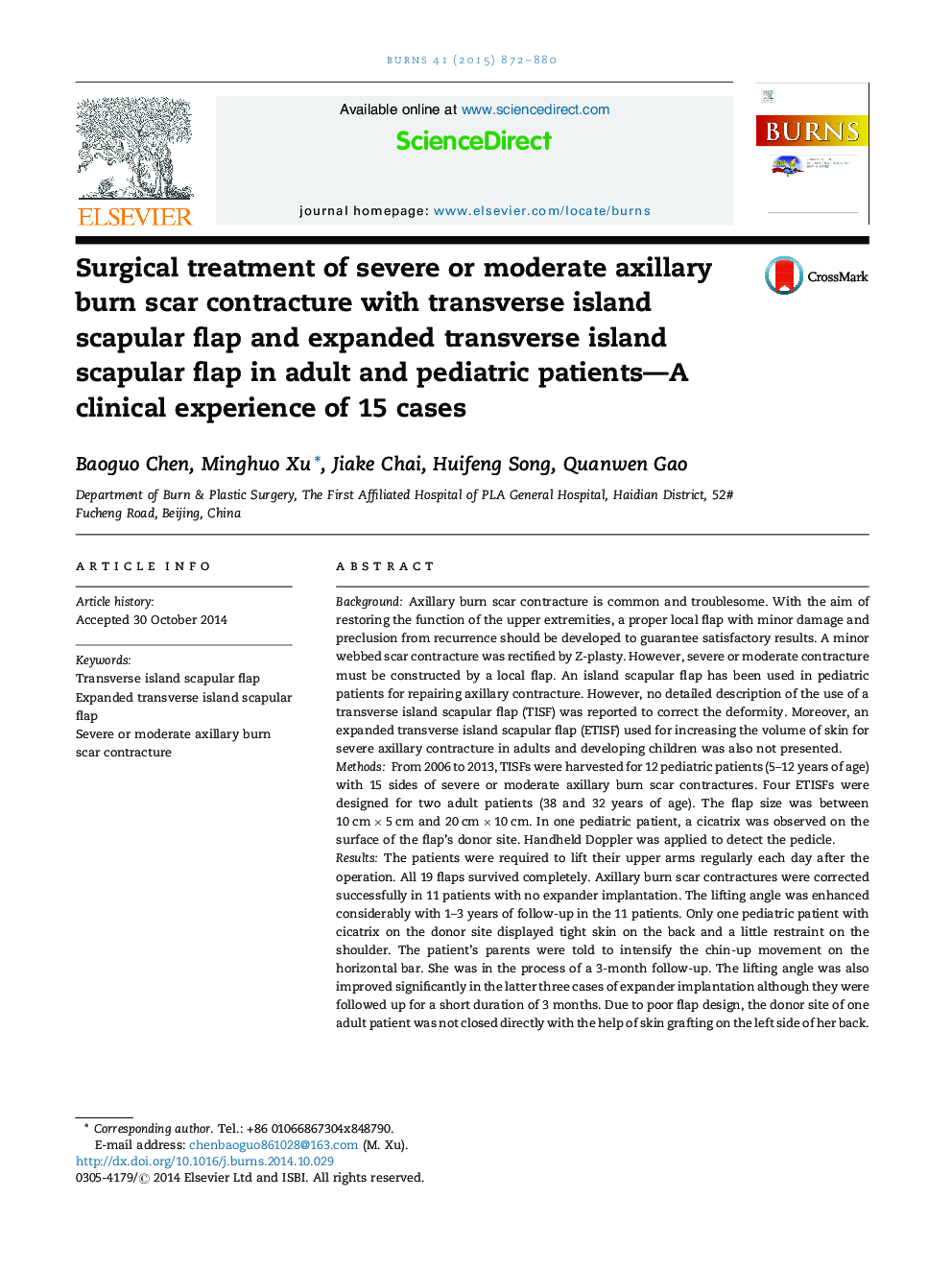| کد مقاله | کد نشریه | سال انتشار | مقاله انگلیسی | نسخه تمام متن |
|---|---|---|---|---|
| 3104309 | 1191648 | 2015 | 9 صفحه PDF | دانلود رایگان |
• We modeled 15 patients with pigmentation problems.
• Transverse island scapular flaps and expanded transverse island scapular flaps were applied.
• The scarred area located on the back could also be designed as a flap.
• A visible improvement of the lifting angle of the upper arm was observed.
• Repeatable results were attained.
BackgroundAxillary burn scar contracture is common and troublesome. With the aim of restoring the function of the upper extremities, a proper local flap with minor damage and preclusion from recurrence should be developed to guarantee satisfactory results. A minor webbed scar contracture was rectified by Z-plasty. However, severe or moderate contracture must be constructed by a local flap. An island scapular flap has been used in pediatric patients for repairing axillary contracture. However, no detailed description of the use of a transverse island scapular flap (TISF) was reported to correct the deformity. Moreover, an expanded transverse island scapular flap (ETISF) used for increasing the volume of skin for severe axillary contracture in adults and developing children was also not presented.MethodsFrom 2006 to 2013, TISFs were harvested for 12 pediatric patients (5–12 years of age) with 15 sides of severe or moderate axillary burn scar contractures. Four ETISFs were designed for two adult patients (38 and 32 years of age). The flap size was between 10 cm × 5 cm and 20 cm × 10 cm. In one pediatric patient, a cicatrix was observed on the surface of the flap's donor site. Handheld Doppler was applied to detect the pedicle.ResultsThe patients were required to lift their upper arms regularly each day after the operation. All 19 flaps survived completely. Axillary burn scar contractures were corrected successfully in 11 patients with no expander implantation. The lifting angle was enhanced considerably with 1–3 years of follow-up in the 11 patients. Only one pediatric patient with cicatrix on the donor site displayed tight skin on the back and a little restraint on the shoulder. The patient's parents were told to intensify the chin-up movement on the horizontal bar. She was in the process of a 3-month follow-up. The lifting angle was also improved significantly in the latter three cases of expander implantation although they were followed up for a short duration of 3 months. Due to poor flap design, the donor site of one adult patient was not closed directly with the help of skin grafting on the left side of her back.ConclusionsConsidering the flap's negligible level of later contracture and minimal trauma, local TISF based on the transverse branch of the circumflex scapular artery is a good choice for reconstruction of axillary burn scar contractures. If the TISF is not able to meet the demand, the expander implanted in advance can be more beneficial.
Journal: Burns - Volume 41, Issue 4, June 2015, Pages 872–880
